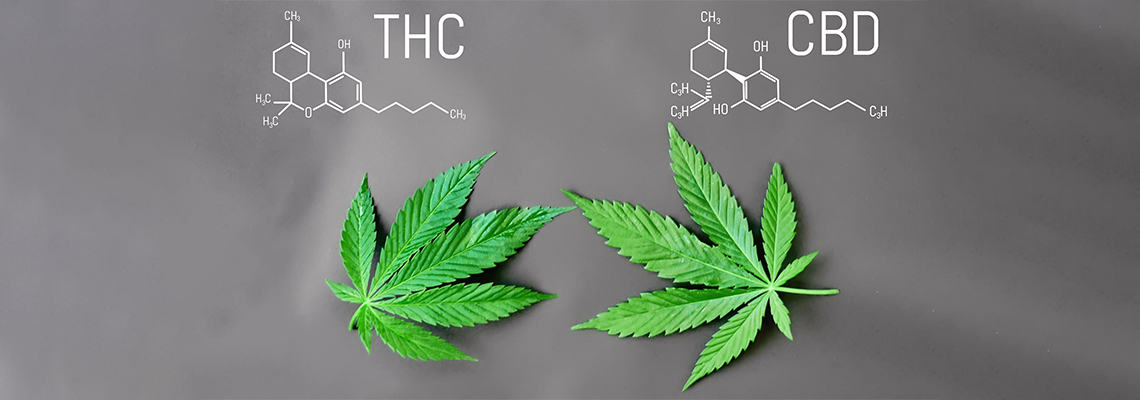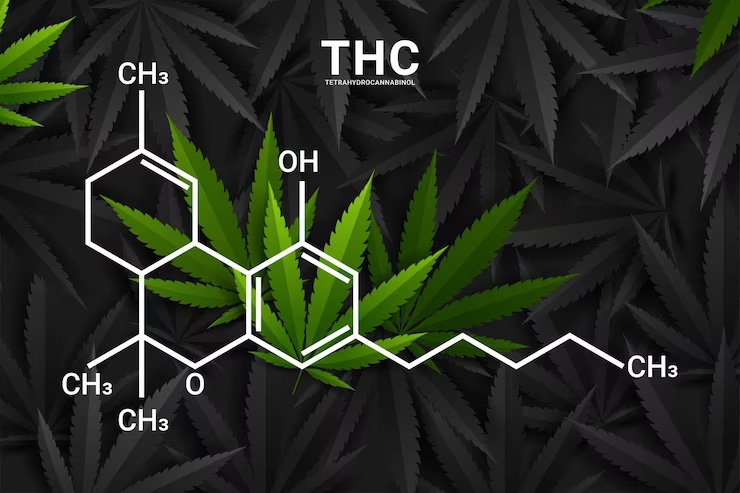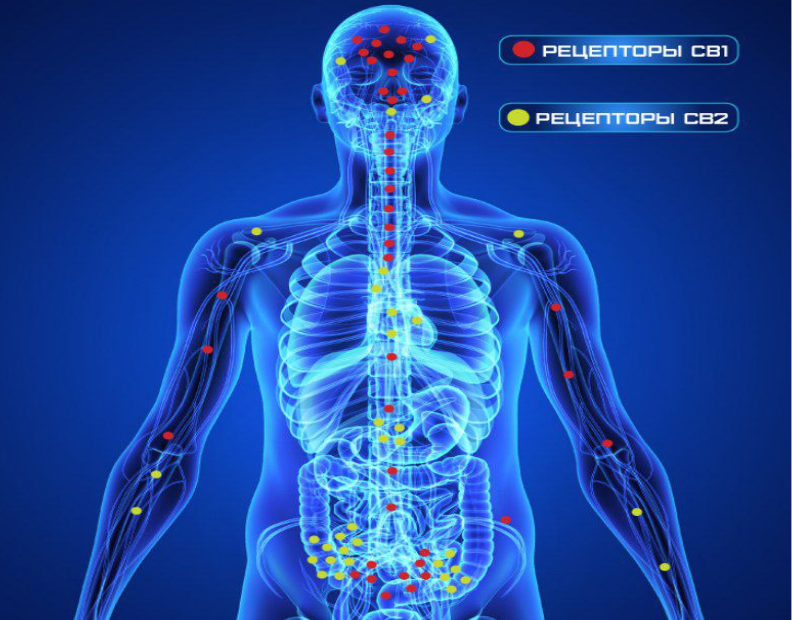There seems to be nothing in your cart.
Didn't find what you were looking for? Contact our consultant.
To save your shopping cart until your next visit, create an account or register .
Browse our Hits sales
There seems to be nothing in your cart.
Didn't find what you were looking for? Contact our consultant.
To save your shopping cart until your next visit, create an account or register .
Browse our Hits sales

*This text is provided for informational purposes only. The information provided by the author is his own development using information from publicly available sources. The company is not responsible for the submitted copyright material.
Content:
THC is the main psychoactive component of cannabis. It is best known for the effect it has on the human body. It is the most abundant phytocannabinoid found in cannabis. Hemp is known to contain over 100 phytocannabinoid compounds, as well as a mixture of other molecules including terpenes and flavonoids. In total, more than 500 different compounds have been discovered, and it is very likely that many interesting properties and potential uses of cannabis are yet to be discovered. Δ9-tetrahydrocannabinol (THC) and cannabidiol (CBD) are two of the most abundant cannabinoids found in the plant. Cannabinoids belong to a class of chemicals called terpenoids, i.e. terpene-like. These compounds are found as essential oils in many plants, and some are involved in the formation of vitamins, steroids, pigments, and fragrances. The perfume industry uses such compounds, and they also find many uses in the food and pharmaceutical industries as flavor enhancers.

THC chemical structure
THC was first isolated in 1964 at the Hebrew University of Jerusalem by Rafael Meshulam and Yechiel Gaoni. After isolation and determination of the molecular structure, chemical synthesis quickly followed, and the greater psychoactivity of the (-) trans isomer compared to the (+) trans isomer was determined. This property of a molecule extracted from a plant that could bind to receptors inside a person was an unexpected discovery. Researchers assumed that phytocannabinoids bind to receptors, and it was soon determined that these unknown receptors have other specific functions and interact with unknown compounds produced in the human body.
Over the next 25 years, at least two cannabinoid receptors (CB1 and CB2) were discovered in the body. Once these receptors were discovered, this was followed by the discovery of the internal compounds later called endocannabinoids, along with their synthetic derivatives and degradation products
In order to understand how cannabinoids work and what THC is, it is necessary to understand the concept of the endocannabinoid system (ECS).
It's a complex system that was discovered in the early 90's by scientists who were researching THC. Phytocannabinoids (including THC and CBD) are not part of the ECS but exert many of their effects on the body through this system. Prior to the discovery of ECS, opioid receptors were similarly found in the body that bound plant-derived opioid molecules. This discovery led to an understanding of how the endorphin system works. The discoveries of the EC and endorphin systems have brought amazing insights into bodily functions that have not yet been fully understood.
The bright minds of mankind are still trying to fully understand the EX. At the moment, it is known that it plays a role in regulating a huge number of functions and processes in the body, including:
EX is active even if you have never used cannabis!
The endocannabinoid system includes three key components: endocannabinoids, receptors, and enzymes. Enzymes are needed in order to remove endocannabinoids that have already fulfilled their function.
Endocannabinoids, also called endogenous cannabinoids, are substances that are similar in structure and action to the active ingredients of cannabis, only they are produced by neurons in the brain, hence the prefix "endo-".
Scientists have found two key endocannabinoids:

They help our internal processes run properly and smoothly. You do not need to know their chemical structure and names, it is enough that you are aware that they exist. Your body produces them on an as-needed basis, making it difficult to determine their exact body levels.
These receptors are found throughout your body. Endocannabinoids bind to these receptors to send ECS signals.
Currently, two main receptors have been discovered and studied. These are the so-called CB1 and CB2 receptors. More recently, scientists have discovered 3, a previously unknown receptor. It was called GPR55, but more reliable information should appear in order to include it in an article about it. It is only known that he is responsible for the mechanism of action of CBD. Endocannabinoids can bind to any of these receptors. For example, some can interact with CB1 receptors and relieve pain. And others will bind to CB2 receptors on your immune cells to tell your body that there is inflammation that needs to be addressed.
CB1 was first discovered in the CNS, leading to the misconception that the receptor is limited to the brain. CB2, later found in the spleen, was also erroneously thought to be only a peripheral receptor, which is limited to interacting only with the immune system. However, after additional research, it was recognized that CB1 and CB2 receptors are expressed at different concentrations in both the central and peripheral nervous systems.

Location of receptors in the body
CB1 is the primary receptor through which the phytocannabinoid THC exerts its psychoactive properties. It is by far the most abundant cannabinoid receptor in the body, with the highest density in the CNS. The CB1 receptor is found in many places outside the CNS, including the heart, blood vessels, intestines, and immune cells. This variation indicates the many functions that the receptor performs.
THC not only has partial affinity for CB1 and CB2 receptors, but also has a wide range of interactions with non-cannabinoid receptors, transport systems and enzymes widely distributed throughout the body. Although THC is known for its psychoactive effects, THC's being a partial CB1 receptor agonist has received a lot of attention. This proves that part of the physiological effects of THC occur outside of the ECS.
***An agonist is a chemical compound that, when interacting with a receptor, changes its state, leading to a biological response. Conventional agonists increase the response of the receptor, inverse agonists decrease it, and antagonists block the action of the receptor. THC is, in simple words, a key that, embedding in a receptor, has an effect on it.
It is now recognized that CB1 is present in other organs in addition to the CNS and spans the cardiovascular, pulmonary, gastrointestinal, skin, immune, and ophthalmic systems. Although this receptor is highly active in the CNS, its presence in many organs suggests that the ECS performs an important function in the body. The additional activity of phytocannabinoids on non-cannabinoid receptors in the body only supports the findings that cannabinoids serve multiple functions.
Scientists still have not figured out all the functions that the pacemaker performs, because it is a very complex system.
EX is associated with the following processes:
All these functions lead to homeostasis (constancy of the organism). For example, a force has acted on you from the outside, which led to an injury or a fever: this upsets the balance of your body. But this is where EX comes into play to help the body return to a healthy state. Scientists are convinced that this is the main task of the EX.
In the CNS, the CB1 receptor is particularly abundant in several areas, including the cerebral cortex, basal ganglia, and cerebellum. The second area where there is a lot of CB1 is the limbic lobe and the hippocampus. The abundant presence of CB1 in these areas of the brain likely underlies how THC affects motor activity and emotional sensations, respectively.
Surveying the effects of THC in humans has revealed additional effects on motor control, which included impaired fine motor skills. Other effects, including appetite stimulation, regulation of nausea and vomiting, pain relief, and improvement in sleep quality, are well known and are now generally accepted properties of THC. Some of these discoveries have led to the development of approved pharmaceutical products since the 1980s. Now the leading drugs on the market are: Dronabinol, Sativex, Nabiximols, etc. They are prescribed for HIV therapy, anorexia, chemotherapy nausea and many other conditions.
The information on the CB2 receptor is much less extensive than that on the CB1 receptor. Although it was first identified in the spleen and circulating lymphocytes, it is now found to be present in both peripheral and central sites, including microglia, monocytes, mast cells, and B lymphocytes. That is, in everything that is responsible for immunity.
Unlike CB1, the CB2 receptor is difficult to detect. It is detected using classical antibody methods. It is possible that manipulation of the CB2 receptor may play an important role in many processes, including any inflammation, osteoporosis, cancer, and neuropsychiatric conditions such as anxiety and addiction. Raphael Meshulam suggested that the CB2 receptor might be part of the body's defense system against infections and damage.
Supporting this belief is research based on the observation that the CB2 receptor has an affinity for endocannabinoids and other receptor agonists. Endocannabinoids are produced in response to many pathological conditions, including cardiovascular, neurodegenerative, neuropsychiatric, and pain.
Let's see how tetrahydrocannabinol (THC) interacts with ECS.
As you already know, THC is the component of cannabis that causes a feeling of euphoria. As soon as it enters our body, it begins to interact with the ECS, binding to receptors, just like endocannabinoids. It can bind to both CB1 (mostly) and CB2 (rarely) receptors. This allows you to get various effects on your body and mind. For example, THC can reduce pain and stimulate a brutal appetite in people who suffer from anorexia. Psychologically, THC can cause euphoria and mood enhancement, and can also distort the perception of time and space. This can lead to the fact that a person will perceive events and situations differently than usual. In high doses, THC can cause anxiety and in some cases even paranoia. Therefore, we urge you to approach the process wisely and use low doses of THC if you want a minimum of side effects.
Auto Gagarin Feminised Silver
The use of THC, although it may provide relief in some cases, is also associated with a number of potential risks and side effects. It is important to note that the response to THC can vary greatly from person to person depending on many factors, including individual physiology, dosage, and method of consumption.
Side effects of using THC can include dry mouth, dizziness, increased heart rate, problems with coordination, and drowsiness. Long-term use of THC can cause memory and cognitive problems, especially in young adults whose brains are still developing.
In addition, the use of THC can provoke mental disorders, especially in individuals who have a predisposition to such diseases. THC is known to enhance symptoms of schizophrenia and other psychotic disorders, as well as causing or exacerbating anxiety and depression.
It is important to remember that legislation regarding the use of THC varies greatly from country to country and region to region. In some places, the use of THC for recreational or medical purposes is completely legal, while in others it is strictly prohibited. You should always check and follow your local cannabis laws.
Responsible use of THC also includes understanding its effects on your body, avoiding its use in a safe environment, and not using it in conjunction with other substances that may enhance its effects or cause unwanted reactions.
THC is a powerful substance with a wide range of potential effects on the body. Although its medical use can be quite valuable in some cases, it is important to always be aware of the possible risks and limitations of its use. An informed and informed approach to the use of THC will help ensure the maximum benefit and minimize the possible risks.
THC, or tetrahydrocannabinol, is the main psychoactive component of cannabis and is responsible for the sensation of intoxication or "high" commonly associated with consumption of the plant. It is one of the many cannabinoids found in cannabis.
THC affects the brain, causing feelings of euphoria, altered perception of time and space, improved mood, relaxation, and increased appetite. These effects can be more or less strong depending on the concentration of THC in a particular product and the individual reaction of the user.
THC and CBD (cannabidiol) are both cannabinoids, but they have different effects on the body. THC is a psychoactive substance, while CBD does not have psychoactive properties, but is known for its anti-inflammatory, antioxidant, and anti-anxiety properties.
Author: Dmitry Morgan
Related articles: